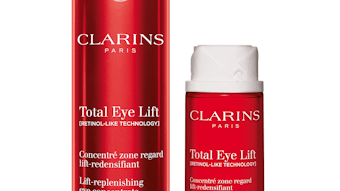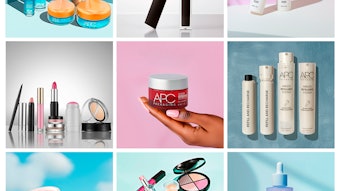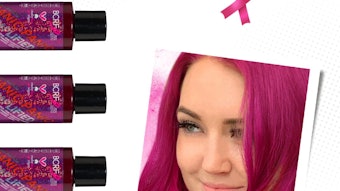In researching spray technology and aerosols, you can find reoccurring suppositions that consumers—primarily American consumers—are reluctant to use personal care and cosmetic products that utilize these delivery systems. Columnists refer to FDA actions in the late 1970s, and organizations dedicated to being advocates for the industry appear to have placed combating the decades-old perception regarding the safety of propellants at the top of their “to do” lists. However, the number of new products and innovations, in both what can be delivered and how to deliver, just don’t support the need for this battle any longer. Although pumps do not utilize propellants, innovations and positioning in that sector have been influenced by both the travails and advantages of aerosols.
Consumers understand that the sky is not falling when they spray their favorite cosmetic or personal care item, and, more than ever, demonstrate they value the convenience and efficacy of spray technology. In fact, spray technology seems to be in a renaissance. Cans and bottles no longer look like commodity products—ergonomics are considered, pumps are gaining in sophistication and in aesthetics, applications grow and the possibilities in formula delivery flourish.
Aerosols: The Trick is at the Tip
The aerosol industry not only has survived lingering misconceptions, globally, it produces 10 billion aerosol products annually, according to the Aerosol Association of Australia Inc. In addition to a long shelf life free from contamination, aerosols can dispense a large variety of products—from powders and pastes to gels, foams and liquids. Thanks to the valve and actuator, products can be dispensed in doses as small as 50gm in exact spray patterns and at exact dosage, and manufacturers continue to innovate with custom, locking metal actuators and specialty valve collars.
Bottom line, the format offers unquestionably strong benefits.
Among other worthwhile attributes, aerosols offer an ideal format to co-dispense products, but the process has required separate sources within a can—which require different filling machines—and can co-dispense but not mix.
Bag-on-valve systems are offered, allowing standard cans to be used, and MixTek System LLC has introduced a system that successfully addresses the mix issue. The components of the product, contained in separate chambers, are mixed in a replaceable cartridge baffling system before being dispensed through the applicator nozzle. By removing the baffle system, the system also will accommodate a side-by-side flow of two component formulas.
In a test conducted by Westman Associates, Inc., the system was fitted with two Lechner barrier pack cans and a color-coded formulation of viscosity 1,200 cps.
Spectrophotometric analysis demonstrated that the system accurately dispensed and mixed the contents in a 1:1 ratio. According to the company, the system also accommodates components of gel or cream viscosity, making it appropriate for oxidation hair dyes, hair lighteners and sunless tanners that contain amino acids.
New atomizing systems also have allowed the reduction of propellants needed in an aerosol without sacrificing reasonable flow rates. The LINDAL Group developed Truspray valves to work with conventional aerosol containers. The system provides aerosol formation by using capillary atomization, reducing the amount of propellant. According to the company, the system also allows higher product content within the can and more precise application.
Bottles and Cans: Unlocking Potential
There is a good deal of give and take with the materials used for bottles and cans. The most cost-effective materials may not be suitable for certain formulations; materials appropriate for a brand may not withstand the pressures needed for aerosols … and the list goes on. Advances and innovations in the materials used for bottles and cans as well as the advances in manufacturing processes are opening cost-effective possibilities. Strong, recyclable and relatively low-cost, steel has been a stalwart for use in aerosol cans, but there have been limits in design flexibility and options with steel cans. DS Containers formed a partnership with Daiwa, applying Daiwa’s polymer-coating technology, to produce steel aerosol cans suitable for household and personal care items that address the limitations of steel. The polymer-coated steel that is applied as part of the coil-making process at Corus Packaging Plus in Europe combines the integrity of steel with the versatility and protective properties of plastic. Finished cans are scratch, corrosion and rust-resistant, eliminating the need for coatings, both inside and outside, which are used in conventional can-manufacturing. With the polymer coating, the cans meet FDA and EU food-grade criteria.
Because there is no side seam, the cans from DS Containers—which is still in the early stages of marketing the cans to personal care and cosmetic brand owners—offer multiple overcap options. Further, the elimination of a side seam and the polymer coating accommodate challenging formulations. The elimination of the side seam also allows for complete circumference printing.
Plastics works well for spray pumps, but most do not stand up to the pressure required in aerosols. BP’s polyethylene naphthalate has been utilized for transparent plastic aerosol containers that withstand high pressure, protect against moisture and oxygen and prevent bottle coloration—unlocking options for brand owners in both presentation and delivery.
At the Pump: Stylish and Propellant-free
Pumps meet a number of needs—allowing propellants to be eliminated, facilitating ergonomics and serving as an extension of brand identity. Pumps, however, haven’t matched the packaging integrity of aerosols—ensuring product efficacy and extending product life—until recently. Airlessystems has developed packaging that protects and increases the efficacy of products. The packaging for the company’s Titan piston pack is a two-piece product that snaps together and prevents air from entering to protect formulas from oxidation. The company also offers pouch systems designed to optimize formula protection.
Progressive pump designs also are able to provide the fine mist spray so desirable in an aerosol. Airspray’s Dry Spray Dispenser, for example, provides a continuous, fine mist spray without using gas propellants. The cap and the integrated piston act as a pump to build air pressure. The dispenser itself is not pressurized, and is refillable.
Ease of use in delivering application-appropriate dosages, and trigger sprayers have enjoyed success in household products and personal care items—as demonstrated by Gillette’s Right Guard Cool Spray with its thumb-activated side trigger and valve tip and crown created by Summit Dispensing Systems. SeaquistPerfect Dispensing created Jazz™, a “mist trigger” that delivers directional doses of 190 micro liters and fits standard bottles.
It is particularly interesting to see how pumps created for fragrance brands have been designed to reinforce the brand image while improving delivery of the product. The pump Pfeiffer created for Diesel Green by Marbert integrates the ease-of-use functionality of a trigger pump with a distinctive, brand-evocative design. Rexam’s Snap In® SP8 pump mechanism reinforces brand identity by accommodating the low neck and profile of HUGO energise, and the camouflaged dip tube and pump mechanism was designed to complement the overall packaging.
Samples and the Shrinking Atomizer
Fragrance samplers also are benefiting from spray technology. “Fragrance is an area that is increasingly challenging, and it is critical that the consumer’s first impression of a fragrance is favorable,” said George Kress, vice president, global packaging, The Estée Lauder Companies, in a press release regarding Valois of America’s new spray technology. Integrity of the fragrance is vital, and sprays have long been the ideal delivery system. Spray manufacturers have the increasing ability to produce small spray systems that are cost-effective, scalable and compatible as insertions.
Valois of America developed a single-use atomizer that can be inserted into magazines. The atomizer, called Imagin, is presented flat, and allows air to enter upon opening. Estée Lauder introduced its pleasures fragrance with Imagin inserts in Us Weekly—the first time an actual spray sampler was inserted into a magazine, according to Valois of America.
“Valois’ goal was to develop a sampling system that preserved the freshness of the fragrance and could reach as many people as possible,” says Eric Bauer, president, Valois of America, in the product launch press release. “Our consumer research demonstrated a need for an innovation, superior to existing sampling technology.”
According to Valois of America, the technical principle is based on a biphasic system, mixing air and liquid fragrance throughout a porous material to create a fine spray. The actual package is a form, fill and seal technology. Upon opening, the cardboard is expanded. Squeezing the package applies pressure on the internal bag that contains the fragrance and the spray is created.
“(A number) of different concepts were studied to come up with the final design,” said Edward Quinn, national director of sales—perfumery and cosmetics, Valois of America. “The launched version of Imagin took four years of research and development, considering both the product and process.”
As demonstrated by Pfizer Consumer Healthcare’s launch of Listerine PocketMist, miniature spray products that fit in a pocket or purse have a viable place in the market. Rexam Dispensing Systems’ Crystal SP5 fits miniature bottle necks (molded or tubular glass), and it utilizes an “invisible” and neutral motor.
The future looks bright for spray technology in general, and the consumer is sure to benefit. It is reasonable to expect that this technology will continue to produce better and more flexible delivery systems—aerosol tips, materials, spray mechanisms—that live up to every task demanded by both consumer and formulator.









